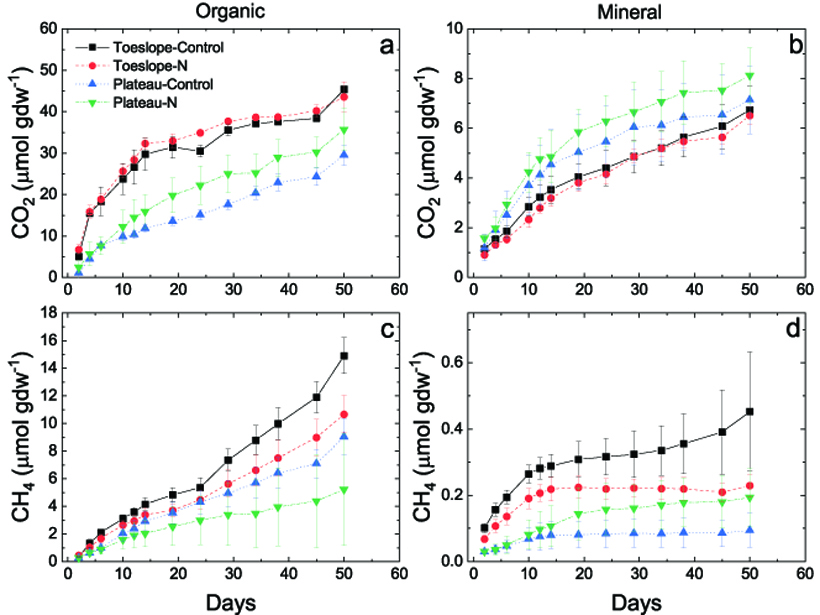In comparing soils from two tundra wetland landscape positions, landscape position is found to matter, and toeslopes are associated with higher greenhouse gas production.
W. M. Hammond
Associate Editor, JGR: Biogeosciences
Posted inEditors' Highlights
Soil Remains Warmer and Drier After Long-term Warming Stops
Pausing a long-term soil warming experiment revealed that previously warmed plots remained both warmer and drier compared to plots which had not experienced previous soil warming.


